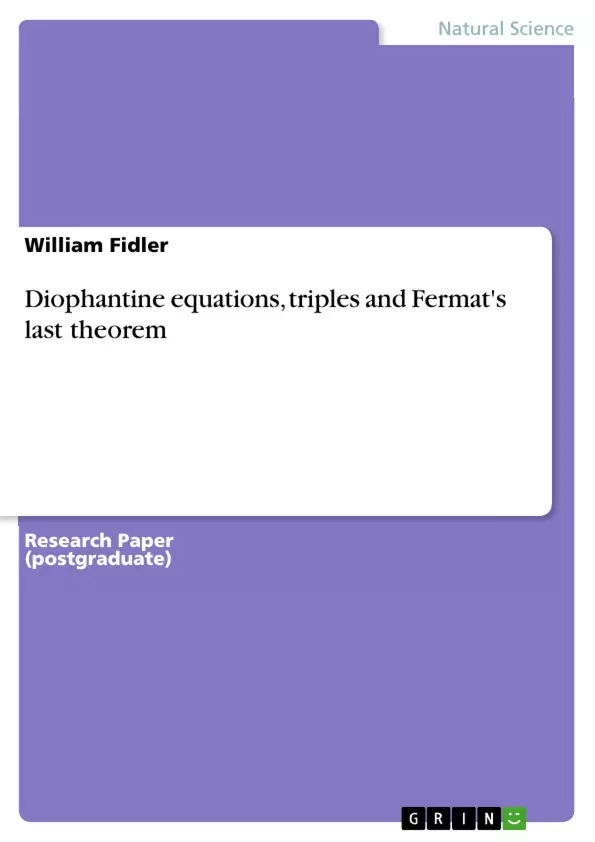We show here, by a novel process, that the infinite sets of integer triples which are individually unique and which derive from Pythagoras’ equation together with those from the linear Diophantine equation, x + y = z, might have convinced Fermat that he had a proof of his last theorem. Also, in the light of Wiles’ proof of Fermat’s conjecture we show that there are only two sets of integer triples for all Diophantine equations of integer degree. Further, it is shown that unless two or more Diophantine equations are of the same degree (not necessarily an integer) then none of the triples of one set may be found in any of the others sets.
Inhaltsverzeichnis (Table of Contents)
- Abstract
- Introduction
- Diophantine equations, triples and Fermat's last theorem
- Pythagorean triples
- Beyond integer triples
- Discussion
- References
Zielsetzung und Themenschwerpunkte (Objectives and Key Themes)
This paper examines the relationship between Diophantine equations, integer triples, and Fermat's Last Theorem. The author explores how the sets of integer triples derived from Pythagoras' equation and the linear Diophantine equation, x + y = z, might have led Fermat to believe he had a proof for his last theorem. The paper also investigates the limitations of these sets of triples in light of Wiles' proof of Fermat's conjecture.
- Relationship between Diophantine equations and integer triples
- Fermat's Last Theorem and its proof by Andrew Wiles
- The significance of the Taniyama-Shimura conjecture
- The uniqueness of sets of integer triples for different Diophantine equations
- The limitations of applying integer triples to Diophantine equations of different degrees
Zusammenfassung der Kapitel (Chapter Summaries)
- Introduction: This chapter provides an overview of Fermat's Last Theorem, its historical significance, and the long-standing quest for a solution. It highlights the work of Andrew Wiles and his proof of the theorem through the Taniyama-Shimura conjecture.
- Diophantine equations, triples and Fermat's last theorem: This chapter focuses on Pythagorean triples, a specific type of integer triple that satisfies Pythagoras' equation. The author discusses the generation of Pythagorean triples using the modified Euclid formula and explores the potential connection between these triples and Fermat's Last Theorem.
Schlüsselwörter (Keywords)
The primary focus of this work lies in the exploration of Diophantine equations, integer triples, Pythagorean triples, Fermat's Last Theorem, and the Taniyama-Shimura conjecture. The paper delves into the historical context of Fermat's Last Theorem and its proof by Andrew Wiles, examining the relationship between these concepts and the generation of integer triples.
- Citar trabajo
- William Fidler (Autor), 2020, Diophantine equations, triples and Fermat's last theorem, Múnich, GRIN Verlag, https://www.grin.com/document/944286



